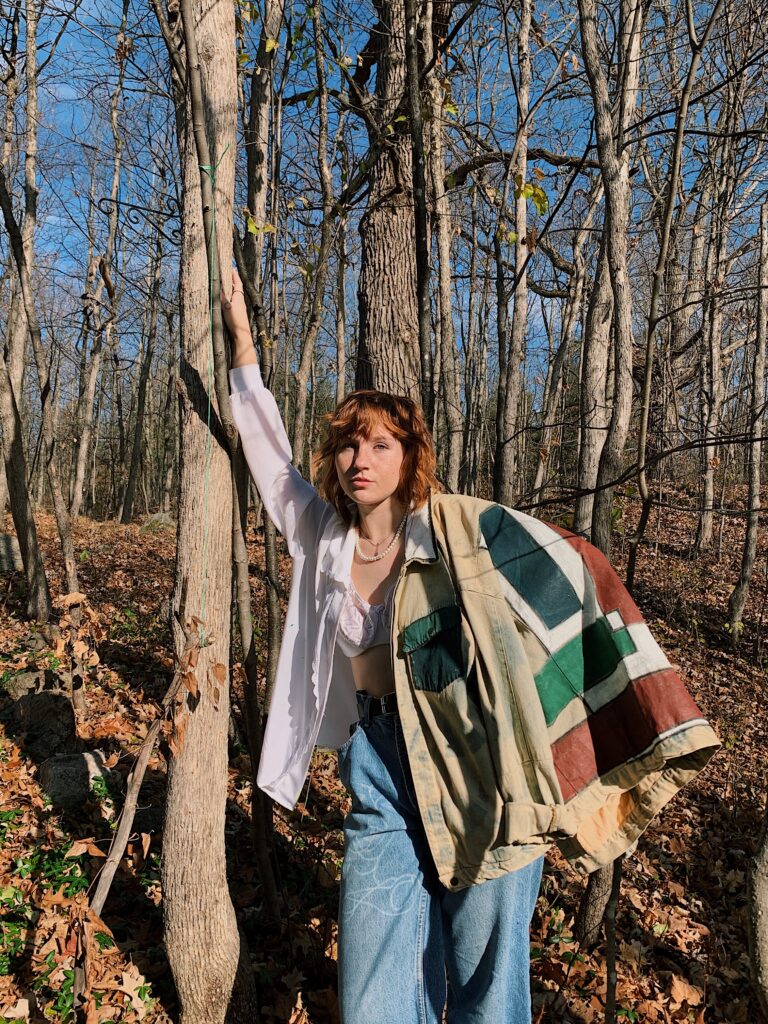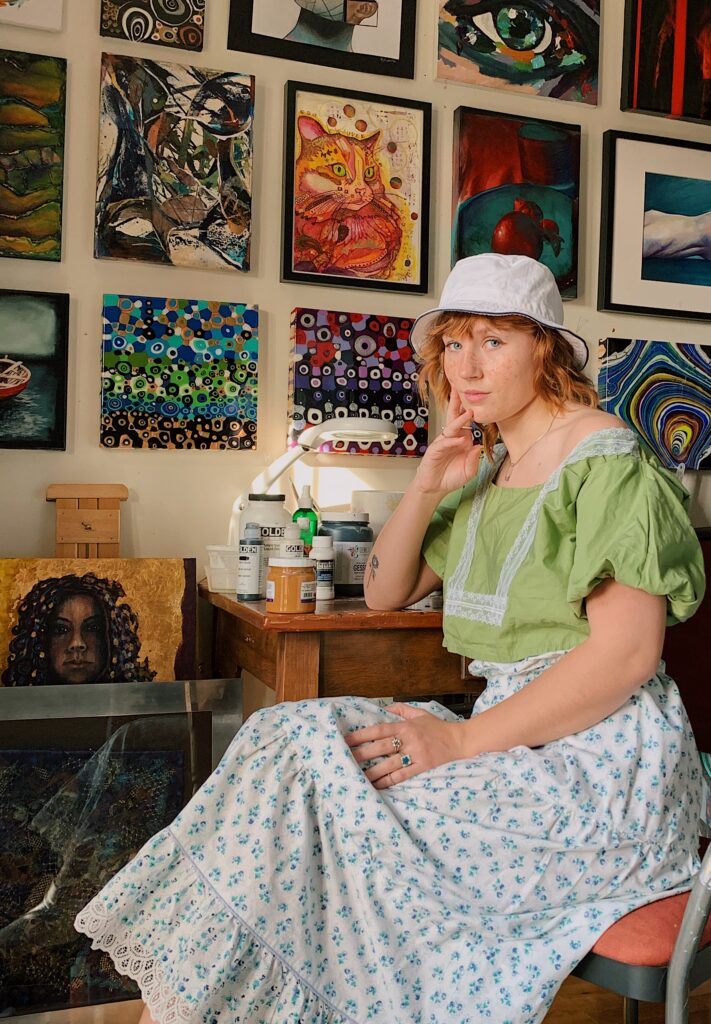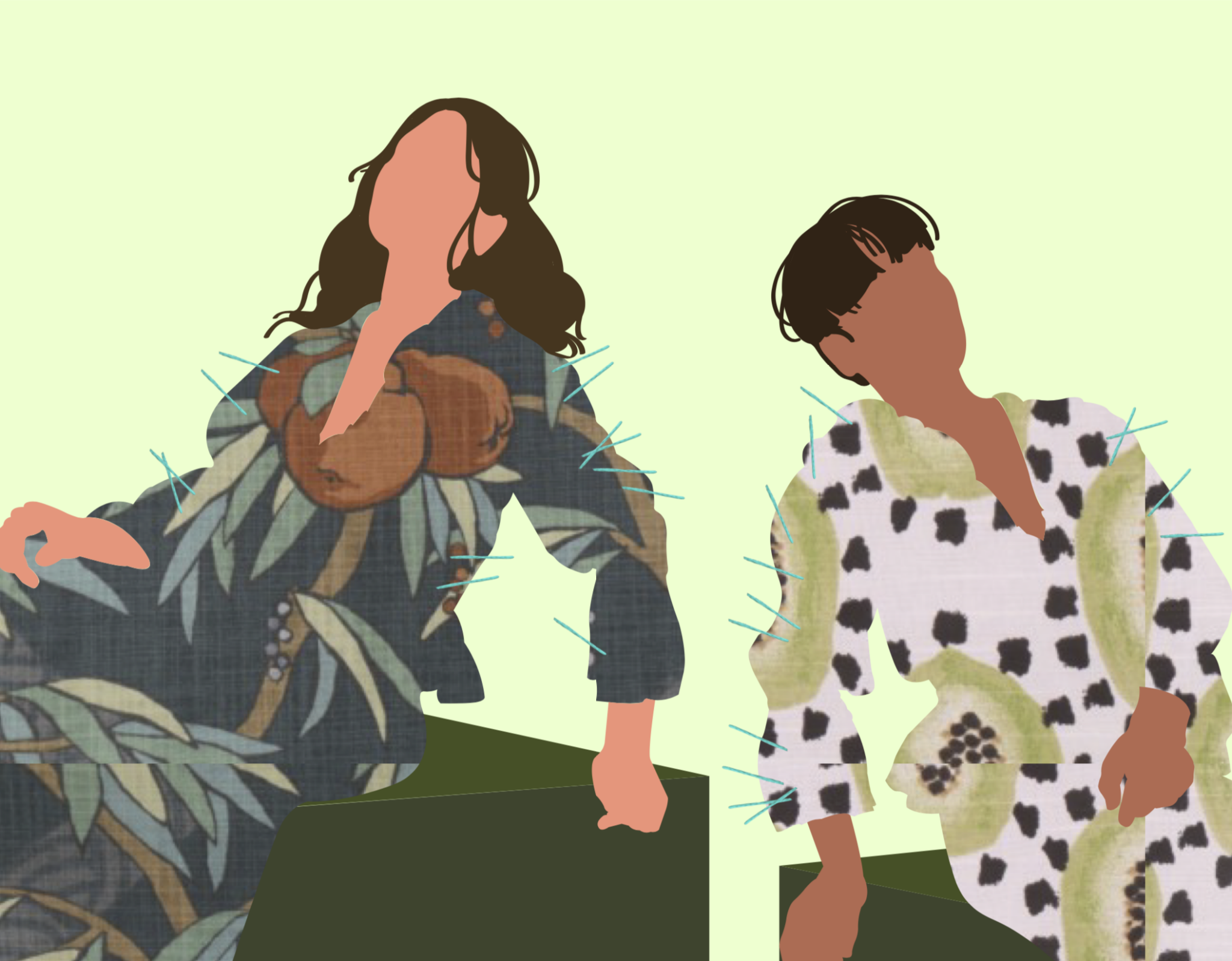GRAPHIC DESIGN Samantha Cass
For the past few years, I have been interested in participating with the fashion system in a way that doesn’t negatively impact either the earth or other people. While at first thrifting may seem like the obvious option, there are other dilemmas that come with shopping second-hand, notably, thrifting has become more expensive as it has grown in popularity. Many slow fashion brands are emerging, but as a student trying to afford rent and groceries in downtown Toronto, many of these options are not financially feasible.
So what to do? Below is an interview I conducted with one of my longtime friends, a visual artist and fashion enthusiast herself. Kyla Mastersmith may have cracked the code to creating a closet you can feel both good in, and about.

So tell me Kyla, what are some of the reasons why you love fashion?
Kyla: I think fashion is such a wonderful tool for self expression – it has this ability to translate and communicate personal identity in such an effective way. I have always felt that fashion creates a bridge between how I feel and know myself on an internal level, to how I exist and present my physical self to the world. I tend to overthink a lot and I can often feel detached from my body because of this. But dressing in clothes I connect with can help me center myself in the world and feel more physically present in a way that simultaneously boosts my self-confidence.
Thank you! If you don’t mind me asking, where do you purchase your clothes?
Kyla: If I haven’t made them, I get most of my clothes from second hand stores, vintage shops, occasionally hand me downs from my family or from online reselling apps like Depop.
So then, as a consumer, do you have concerns with shopping?
Kyla: I like to say I try my best to shop in a way that is sustainable. I remember watching documentaries in high school about fast fashion brands and the textile industry, namely The True Cost. This really changed my perspective of purchasing clothing. I used to go shopping at malls quite frequently and it was easy for me to overlook the labour that goes into making garments because I hadn’t ever tried to make any myself.
Once I learned to sew it helped me understand the work and energy required for making clothes, and so seeing the abundance of clothing in each store at the mall would make me nauseous. I would imagine having to sew each stitch on every item in the terrible conditions most of the clothes are made in, and it made it easy to stop purchasing from fast fashion brands. When it comes to shopping in a more sustainable way, such as second hand, I still think there is always room for improvement on my part, which is partially why I began sewing my own clothes.
I still struggle with knowing my place as a consumer. The increase of people like me, shopping at thrift stores for environmental and humanitarian reasons, presents different concerns. Lots of thrift stores, noticing their increased popularity, have upped their prices. This may economically benefit the stores, however, I believe it will take a toll on communities and individuals who depend on the prices at thrift stores being low. This is an issue I am still trying to navigate as a consumer.
So Kyla, why do you make your own clothing?
Kyla: I think I have always had an interest in customizing my clothing in some way – even when it was just something small like drawing on my shoes with Sharpie in elementary school. I like the feeling that my material possessions are unique to me. I think everyone likes to feel special and by making and altering my clothes it makes them feel very personal and individual. Just by wearing them I am, by extension, special as well.
And where do you get the materials to make your clothes?
Kyla: My aunt worked as a seamstress for most of her life and she is the one who taught me the basics about sewing clothing. In one of her lessons, she told me to look for material at thrift stores and upcycle from things in your home, and it opened up a world of possibilities. A bed sheet can become a dress, a set of place mats can turn into a blouse. You can transform and manipulate whatever you can find into the vision in your head, so long as you do some creative problem solving.
I also think that using what I find, or purchasing second-hand, alleviates some of the worry I often feel about being a beginner sewer and the fear of messing up. If I were to purchase fabric from a fabric store, I would really have to know what I was doing and oftentimes when I’m creating – I have no idea! Using old bed sheets or curtains from a thrift store allows me to feel free to create and make mistakes without the fear that I am wasting money or fabric.

Okay so, finally, what has making clothes allowed you to do?
Kyla: I think making my own clothes has allowed me to feel more confident about myself, and more conscious as a consumer. I feel that making and altering clothing granted me the ability to create, play, and express myself in a language that everyone can understand.
As a visual artist, I often feel that what I interpret from a piece isn’t necessarily evident to everyone who views my work. With clothing, it’s quite the opposite. It feels like fashion can become this inclusive art form because no matter who you are, or where you come from – everyone gets dressed! So in that way, everyone can understand the image of myself I try to portray through the clothes I make.


























